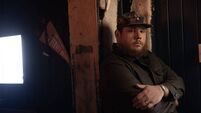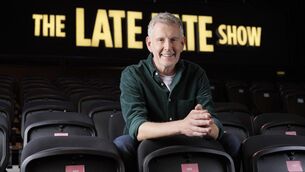Meat & Potatoes: Food and art stirred up together at Crawford exhibition
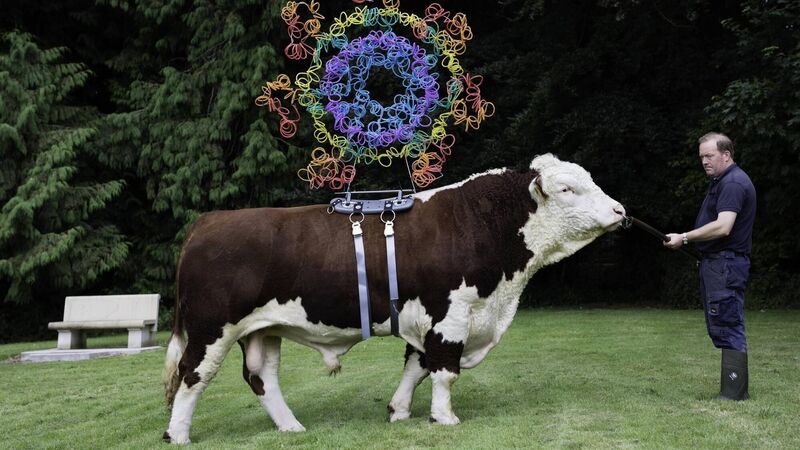
A detail from one of Maria McKinney's pieces at Meat & Potatoes at the Crawford in Cork.
Meat & Potatoes at the Crawford Gallery of Art in Cork brings together work from the past four centuries to reflect on our relationship with food and its production. The exhibition is complemented by a full programme of participatory events, including one that will take its audience out around the streets of Cork to investigate how crucial a role the beef and dairy industries have played in the city’s evolution.
“The exhibition starts with a simple premise,” says curator Anne Boddaert. “It looks at the relationship that artists have had with food for hundreds of years, from artists such as Berand van der Meer, who used it as the basis for still lifes, to contemporary artists such as Monika Crowley or Ella Hawkins who have used it more as a vector for their ideas. Food has always been part of art history, and then, from a visitor’s point of view, it is a subject everyone can relate to. We all need to eat, whether it is for joy or for more practical reasons.”
The exhibition broadly covers three areas of food production; meat, potatoes and bread. Among the artists included is Maria McKinney, who is represented by two large photographs of breeding bulls from her Sire Series, along with two colourful sculptures woven from semen straws, cable ties and glue.
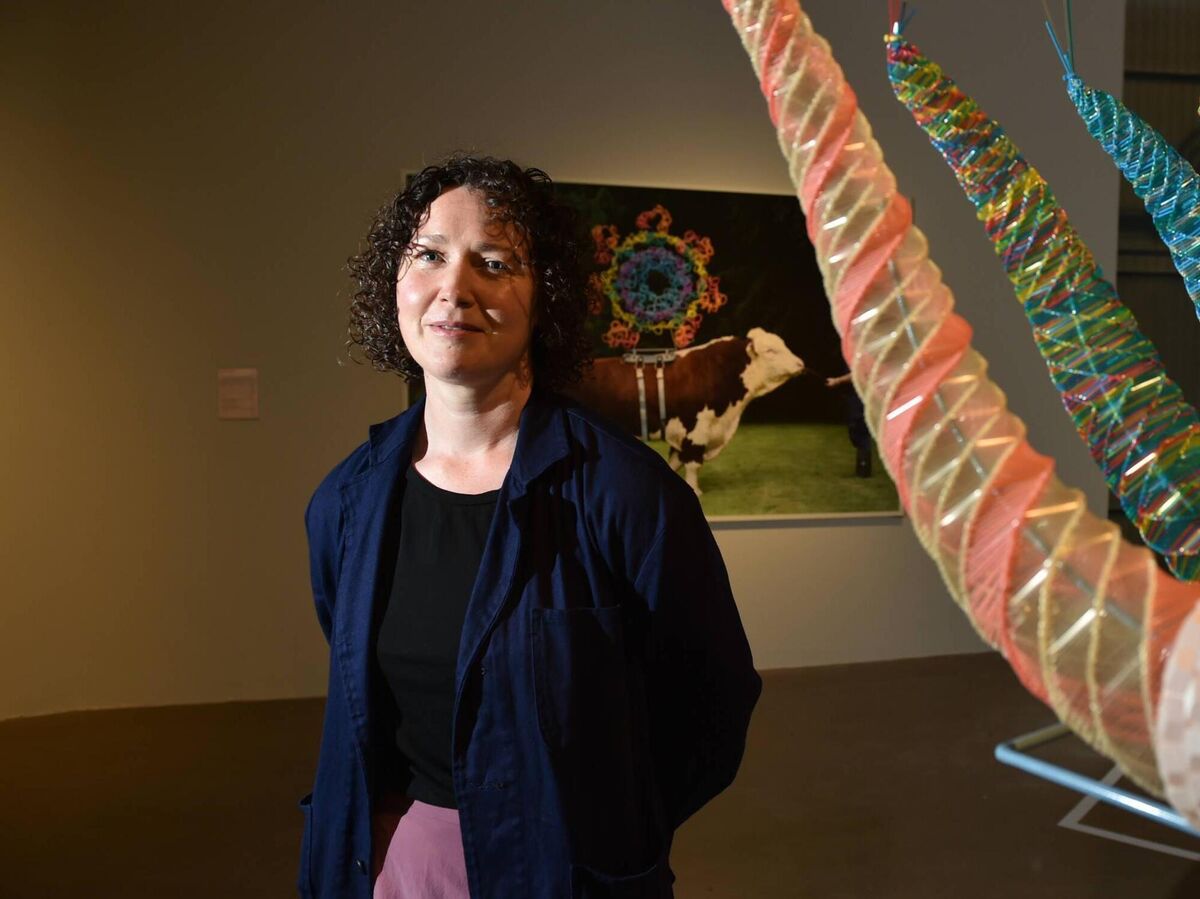
McKinney traces her interest in farming practices to the occasion she was asked to make art in response to an agricultural show in her native Donegal. “I made garlands for the prize-winning Belgian Blue cattle, and enjoyed the experience so much that I started attending more shows, such as the National Ploughing Championships.
“From there, I developed an interest in genetics, and when I learned that the Wellcome Trust in the UK was funding arts awards, I decided to make a proposal. It was meant to be a collaborative project, so I approached a company that keeps more than 90 bulls on a farm outside of Thurles, and began building a relationship with them.”
By then, McKinney had begun making elaborate sculptures woven from semen straws. When her application to the Wellcome Trust was successful, she arranged to photograph the bulls in Thurles with these structures on their backs.
“The bulls are huge creatures. You can see one of their handlers in each of the photographs, but there were three or four more off camera, and they were the ones who strapped the sculptures on. We used quick-release straps, so they could be whisked off again if the bulls showed any discomfort. The bulls are so strong that when one of them just flexed its muscles, the sculpture flew off its back.
“I made nine photographs and nine sculptures for the Sire Series. It was shown at the RHA in Dublin, and at the Wellcome Trust in London, along with a number of other venues in Ireland, the UK and America.”
Since then, McKinney has begun weaving sculptures she can wear herself in performances. “I’m still very interested in farming,” she says, “and particularly in how science is intervening more and more in the natural processes of food production. With an exponentially growing human population, that seems like a necessity, of course, but we’ve seen in the past how pesticides have destroyed the soil. I guess the best we can do is to proceed with caution.”
In Ireland, scientists have made great progress with the humble potato, developing strains that can resist diseases such as the blight that struck the crop to such disastrous effect in the 1840s, triggering the Great Famine and the loss of at least a million lives to starvation and disease.
The potato has had a long interest for the Callan, Co Kilkenny-based artist Deirdre O’Mahony. “I did a project called X-PO in 2009,” she explains. “It involved reopening the post office in Kilnaboy, in the Burren, Co Clare, where I was living at the time. My idea was to revive the post office as a social space. One of the conversations we had was around the different ways of growing potatoes. I grew up in Limerick, and as a townie, I was fascinated by the idea of converting grassland to potato ridges.
“Later, I did a project at the Irish Famine Museum, where some members of the Loy Association of Ireland – the loy is the long, narrow spade traditionally used in potato growing - showed me how to make the ridges.”
O’Mahony began collecting books on potatoes and potato-growing, and often visited Charlie Byrne’s bookshop in Galway when she taught at GMIT. “Vinnie, one of the staff, used to put books aside for me, and one day he gave me a copy of From Courleigh to Creeslough, by Fr John Silke. The book was about how Fr John’s father JJ, an agricultural inspector, established a successful potato industry in Creeslough, Co Donegal in the 1920s. It became the fourth largest exporter of seed potatoes in the country. Many of the potatoes we buy now in the supermarkets, from Morocco or whatever, can be traced back to the seed potatoes exported from Donegal in the 1930s and ‘40s.”
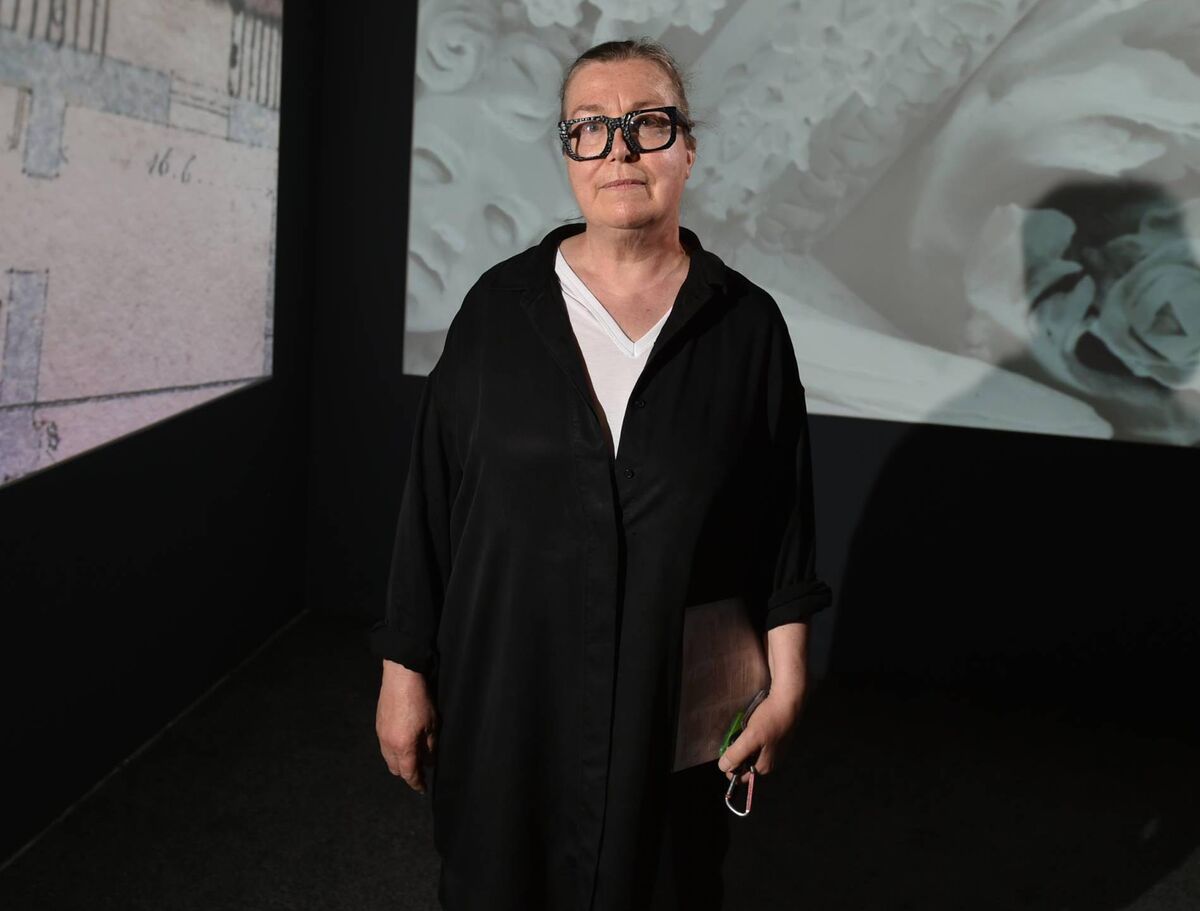
O’Mahony interviewed Fr Silke for her short film, Trial + Error, in which he talks about how the landscape in Creeslough has now returned to the state in which his father first found it, the industry having collapsed on his retirement in 1949. Today, there are fields of rushes where his ridges once produced prize-winning crops, such as the world record yield of 6.5 tonnes per acre of Arran Banners in 1929, or the Lord Derby Gold Medal he won for his Doon Éire potatoes in 1948. The film is accompanied by a selection of black and white photographs of the glory days of the potato seed industry in Creeslough.
O’Mahony’s other contribution to Meat & Potatoes is The Persistent Return, a two-screen film installation that traces the history of the potato and its role in the European colonisation of the Americas in the 17th and 18th centuries. She was particularly taken with how the Incas developed a system of freeze-drying potatoes. “They’d leave them outside in the cold at night, and then, during the day, they’d stamp all the moisture out of them. They’d do that over and over, until the potatoes had hardened, and then they’d store them for times of need.
“It was a perfect system until the Spanish began mining silver, and bought up all the stores of dried potatoes to sustain their workers. So then, when the crops failed, the Incas had nothing to fall back on. It triggered a famine that may have cost as many as 6,000,000 lives, far worse than the Great Famine in Ireland.”
O’Mahony acknowledges how science has helped contain diseases such as the blight, and how it contributes to producing better crops. “But we need to change our behaviour as consumers,” she says. “The supermarket system is killing farming. The only way to change that system is by buying directly from the food producers. And we need more education on growing healthy food and making it more available to everybody.”
Just how detrimental the supermarket system has become to the planet’s wellbeing is perhaps best demonstrated by Lisa Fingleton’s Sandwich Project, a mural in the upstairs gallery that traces the journey of a bacon, lettuce and tomato sandwich from producer to supermarket shelf. The project was inspired by the artist’s own experience of reading the ingredients on the packaging as she ate a supermarket sandwich on a break from hanging an exhibition; they included xanthium gum, emulsifier and stabilisers, along with nearly forty others that had been transported by aeroplane, ships and trucks from all over the world, generating a disastrous carbon footprint.
Singleton’s Sandwich Project is among the works that visitors, and particularly children, are encouraged to respond to with drawings of their own in a part of the upstairs gallery given over to a play space. “We ran an animation workshop in the play space in July,” says Boddaert, “and that was very successful. We’ll be hosting a number of other art workshops over the next several months, along with a programme of talks and tours. It all helps make the exhibition more broadly accessible.”
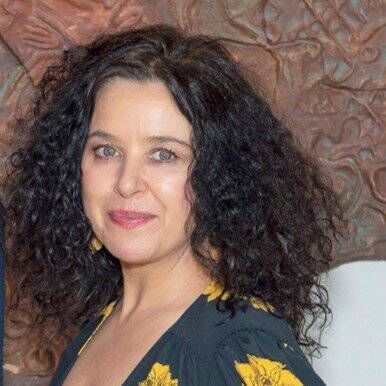
To complement the Meat & Potatoes exhibition, a series of food-related events has been devised by food historian Regina Sexton of UCC and Green Bites podcast presenter Ellie O’Byrne, in collaboration with Anne Boddaert, Ellen Whelan and Eimear Marley of Crawford Art Gallery.
“Meat & Potatoes is a very timely and pertinent look at food and its production,” says Sexton. “It’s an aesthetically beautiful exhibition, but it should also provoke people to think a little more about how food is grown. To that end, we’ve invited Brian McCarthy of Cork Rooftop Farm to grow a crop of Champion potatoes in the upstairs gallery in the Crawford. Champions became a very popular potato crop after the Famine. We’re going to harvest them at Halloween and make colcannon.
“In the meantime, we’re presenting a whole programme of talks and workshops by artists, scientists and food producers. On 17th September, for instance, I’ll be leading a walk around Cork city centre, looking at how the production of beef and butter influenced the development of the city, socially and architecturally. Food production is a huge part of the city’s history and heritage; in the 18th and early 19th centuries, Cork was known as the Slaughterhouse of Ireland.
“We’ll also have workshops on bread-making and cake decoration, and a tour of Cork Rooftop Farm, while the closing event on 4th November is called Future Foods, which will be a sort of Ted Talk on the future of food production.” Woprk
Seeds Are Stories: Saturday 13th August, 1pm: Irish Seed Savers Association’s seed curator Deirdre Morrissey presents a Seed Workshop, followed by a show-and-tell, where people can sow a seed to bring home.
Art Picnic at the Crawford: Sunday 14th August, 11am – 1pm: A picnic themed drop-in workshop for National Heritage Week.
Locavore: Brexit, Covid, Ukraine and Food Security: Thursday 25th August, 6pm: Artist and food activist Lisa Fingleton and other panel experts discuss food security.,
Cork Rooftop Farm: Morning Tour: Saturday 10th September, 10am: Brian McCarthy leads a tour of the rooftop farm less than 500m from the Crawford Art Gallery. Free but ticketed. Places limited.
Walking Cork’s Food Culture: Past and Present: Saturday 17th September 10.30am – 2pm: Food historian Regina Sexton leads a walking tour of the city once known as “the Slaughterhouse of Ireland.” Free but ticketed. Places limited.
Our Daily Bread: A Sourdough Bread-baking Workshop with the Experts: Saturday 8th October, 11am – 3pm: Breadmaking with Fanny Leenhardt of Well Bread and Ben le Bon of the Natural Foods Bakery. Free but ticketed. Places limited.
Artist Talk with Deirdre O’Mahony: Thursday 20th October, 5.30pm
Samhain: The Origins of an Irish Hallowe’en and the Festive Foods of Humans and Fairies: Monday 31st October, 3 – 5.30pm. Food historian Regina Sexton and UCC folklorist Dr Jenny Butler dig spuds and cook up a batch of colcannon.

